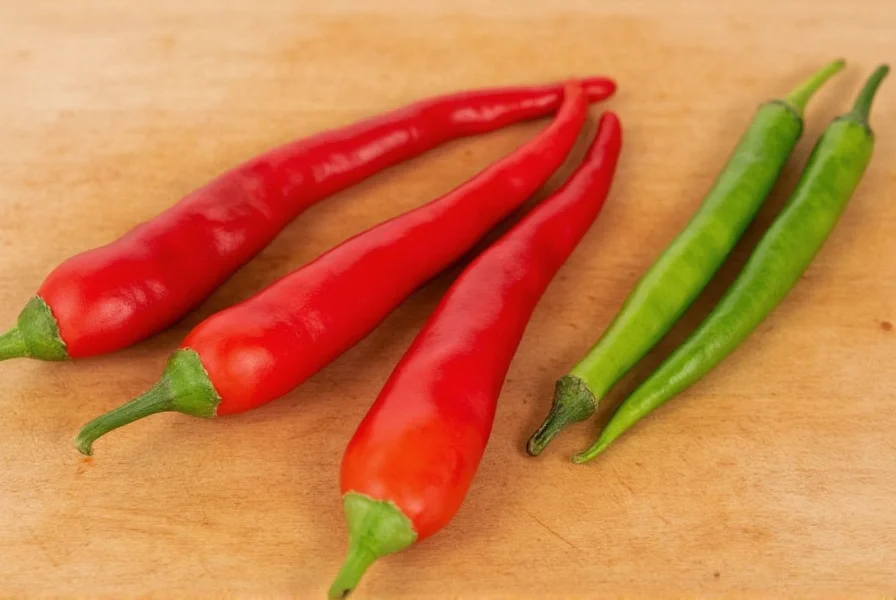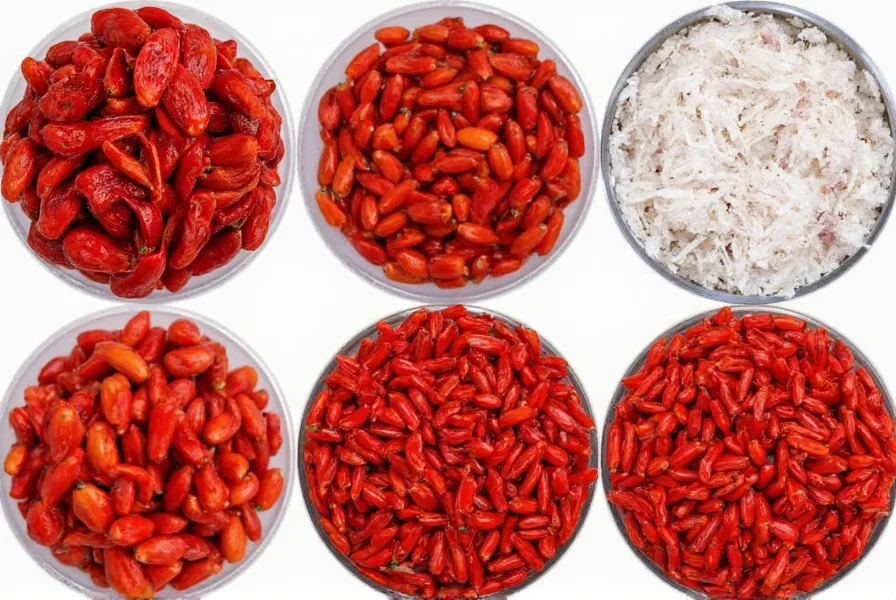When you encounter small red pepper in a recipe or at the market, you're likely dealing with one of several distinct varieties that share size and color but differ dramatically in heat and flavor. Understanding these differences transforms your cooking and helps you select the perfect pepper for any dish.
Common Types of Small Red Peppers
Not all small red peppers are created equal. Each variety brings unique characteristics to the table:
| Pepper Variety | Size (inches) | Heat Level (SHU) | Flavor Profile | Common Uses |
|---|---|---|---|---|
| Thai Bird's Eye | 1-2 | 50,000-100,000 | Sharp, citrusy, intensely hot | Thai curries, Vietnamese dipping sauces |
| Cayenne | 4-6 (often used dried) | 30,000-50,000 | Earthy, moderately hot | Cajun seasoning, hot sauces, roasted dishes |
| Piquin | 0.5-1 | 30,000-50,000 | Smoky, nutty, complex heat | Mexican mole, adobo sauces |
| Cherry Peppers | 1-2 | 0-500 | Sweet, fruity, mild | Stuffed peppers, salads, pickling |

Understanding Heat Levels and Flavor Profiles
The small red chili pepper heat level varies significantly between varieties. Thai bird's eye chilies deliver an immediate, intense burn that builds quickly, while pequins offer a more complex heat with smoky undertones that develops gradually. Cayenne provides consistent medium heat ideal for dishes requiring balanced spiciness.
When selecting peppers for your recipe, consider both heat measurement and flavor compatibility. A Thai curry needs the bright, citrusy notes of bird's eye chilies, while a Mexican mole benefits from the nutty complexity of pequins. Never substitute based on appearance alone—these small red pepper varieties behave differently in cooking.
Practical Culinary Applications
Mastering cooking with small red peppers requires understanding how heat compounds interact with other ingredients. Capsaicin, the compound responsible for heat, is oil-soluble but not water-soluble. This explains why dairy products effectively counteract spiciness while water merely spreads the heat.
For controlled heat distribution:
- Remove seeds and membranes for milder flavor (80% of capsaicin resides here)
- Add whole peppers early for subtle background heat
- Add chopped peppers later for pronounced spiciness
- Roast peppers to develop sweetness and reduce raw heat
Substitution Guide for Small Red Peppers
When your recipe calls for a specific small red chili pepper variety that's unavailable, proper substitution maintains dish integrity. Consider both heat level and flavor characteristics:
- Thai bird's eye substitute: Use serrano peppers (1/2 quantity) or a combination of jalapeño and a pinch of cayenne powder
- Cayenne substitute: Crushed red pepper flakes (1:1 ratio) or paprika with a dash of cayenne for heat
- Piquin substitute: A blend of cayenne and smoked paprika for complexity
- Cherry pepper substitute: Pimiento peppers or mild banana peppers
Always adjust quantities based on your heat tolerance and the specific requirements of your dish. Remember that dried peppers typically deliver more concentrated heat than fresh.
Nutritional Benefits of Red Chili Peppers
Beyond their culinary value, small red pepper nutritional benefits are impressive. These vibrant peppers contain:
- Vitamin C: One small red chili provides over 100% of your daily requirement
- Vitamin A: Essential for eye health and immune function
- Capsaicin: Linked to metabolism boost and pain relief
- Antioxidants: Including carotenoids that give peppers their red color
Regular consumption of chili peppers correlates with various health benefits, including improved circulation and reduced inflammation. The capsaicin in red chili peppers may also support weight management by increasing thermogenesis.
Storage and Preservation Techniques
Proper storage extends the shelf life of your small red peppers. Fresh peppers last 1-2 weeks in the refrigerator's crisper drawer when stored in a paper bag (not plastic, which traps moisture). For longer preservation:
- Drying: String peppers and hang in a warm, dry place, or use a food dehydrator
- Freezing: Freeze whole peppers in airtight containers for up to 6 months (no need to thaw before cooking)
- Pickling: Preserves flavor and adds tangy dimension
- Oil preservation: Submerge in olive oil with garlic for flavorful cooking oil

FAQs About Small Red Peppers
What's the difference between Thai red peppers and cayenne peppers?
Thai red peppers (bird's eye chilies) are significantly hotter (50,000-100,000 SHU) with a bright, citrusy flavor, while cayenne peppers (30,000-50,000 SHU) offer earthier, more consistent heat. Thai peppers are smaller (1-2 inches) compared to cayenne's longer shape (4-6 inches), and they're typically used fresh whereas cayenne is often dried and powdered.
Can I substitute red pepper flakes for fresh small red peppers?
Yes, but with adjustments. One teaspoon of red pepper flakes generally equals one medium fresh small red pepper. However, flakes lack the fresh flavor complexity and moisture content, so add a splash of vinegar or citrus juice to compensate. For Thai recipes specifically, use half the amount of flakes since they're typically made from milder peppers.
Why do some small red peppers taste sweet while others are extremely hot?
The heat in peppers comes from capsaicin compounds concentrated in the seeds and membranes. Sweet varieties like cherry peppers have been bred to minimize capsaicin production, while hot varieties like Thai chilies maximize it. Environmental factors including soil conditions, water stress, and sunlight exposure also affect heat levels in the same variety.
How can I reduce the heat of small red peppers in a dish that's become too spicy?
Add dairy products like yogurt or sour cream, which contain casein that binds to capsaicin. Acidic ingredients like lime juice or vinegar can also help balance heat. For long-cooked dishes, adding more non-spicy ingredients to dilute the heat works well. Never use water—it spreads the oil-based capsaicin rather than neutralizing it.
Are all small red peppers fully mature, or are some harvested early?
Most small red peppers start green and ripen to red, indicating full maturity and peak flavor. However, some varieties like certain Thai chilies are sometimes harvested green for different flavor profiles. Fully mature red peppers typically have higher sugar content and more developed flavor compounds, though heat levels may increase slightly during ripening.











 浙公网安备
33010002000092号
浙公网安备
33010002000092号 浙B2-20120091-4
浙B2-20120091-4